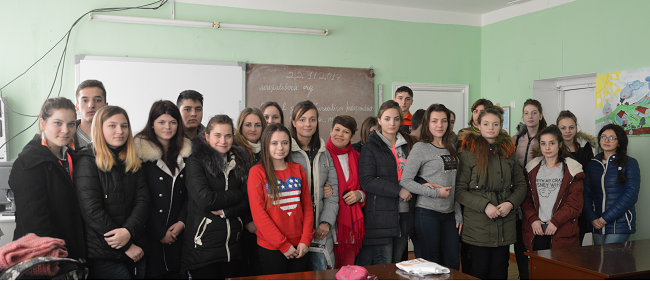
Liliana Barbarosie drew the attention of the young people to the fact that several televisions do not necessarily mean several opinions. If one person owns several stations, and they deliver the same message, it does not mean we have media pluralism.
In this context, the journalist spoke about the difference between manipulation and propaganda; how professional news stories should be written and what questions they should answer; and why it is necessary to check information we hear on radio or TV by appealing to several sources. Students were encouraged to have a critical attitude to journalistic materials and to use several sources of information.
In order to understand that manipulation is done through media outlets, too, participants watched a video spot produced by the IJC, “Do You Know What Media You Consume?”.
Student Maria Carnat (11th grade) says that such activities are beneficial especially to young people, who are less informed and spend more time on social networking websites. “It was an interesting and informative lesson. Starting today, students will be more careful about the information they read or hear on television,” she said.
Between 2014 and 2017, the IJC organized 76 media literacy lessons, reaching 2,137 students and teachers.
The purpose of media literacy lessons is to cultivate the critical thinking of young media consumers, so they can identify manipulating information and diversify their sources of information.
Follow-up activities are part of the "Strengthening Freedom of Opinion in Repubiic of Moldova" project, implemented by the IJC in the period of March to November 2017 with the support of Deutsche Welle Akademie and funded from the Federal Ministry for Economic Cooperation and Development of Germany.












